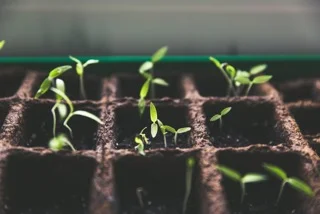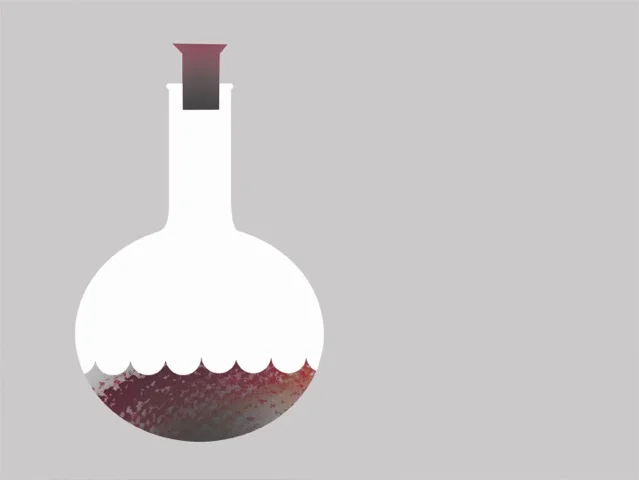Coaching and living in the paradigm of systematic correspondence by Simon Darnton (Guest)
This is a story about finding a new way of coaching and a new way of being...
When I properly embarked on my journey into coaching, I couldn’t have dreamt the direction in which I was going to end up going. I say properly because for years I’d been stuck in a vacillation between head and heart in my career.
Early in my career I trained as a counsellor. Then I moved into the consulting business. In both of these worlds there has for a while been a noticeable orientation towards conceptualising psychology and business functions in machine like, computational, and information processing terms. Due to my professional consulting work at the time sitting within the field of knowledge management, my world was steeped in cognitive and technology oriented approaches to knowledge and knowing (including related business processes, systems, culture and change). Despite working as the human advocate in these sometimes large-scale programmes, I was embedded in this way of thinking and operating; it was and still is the mainstream way of the Western world right now.
Then three things happened to me that fundamentally changed things.
I became incapacitated by an unusual and complex neuro-otological illness (this is basically a balance disorder)
I took up Tai Chi as part of my rehabilitation
I decided to embark upon a Master’s Degree in Psychological Coaching at the Metanoia Institute
1. Balance
Balance disorders are remarkably common yet poorly understood. Standards of both diagnosis and treatment can vary significantly between regions and their hospitals (and which department, because different specialists will view the balance system from very different perspectives). Complex balance conditions are even more poorly addressed. I have the latter.
Even in specialist units where they have high standards of care, the human and psychological ramifications of balance conditions aren’t particularly well acknowledged, let alone addressed. What they miss is that our balance is probably the most fundamental mechanism we have for relating to our world. With a balance disorder, the nature of your relationship with your world changes completely. Surprisingly or not, this will typically begin to dismantle your very identity. I’ve so far only come across one specialist who really understood this. She’s a neuroscientist who, while studying balance, acquired a balance disorder herself.
This illness put an end to my previous career for good.
My experience of the rehabilitation process was an interesting one. I was being treated at a leading centre for my particular nuance of balance disorder, headed up by probably the world’s leading expert in this field. My experience as a patient was awful; they had no idea how to develop a positive human relationship to support this process. When I was treated, it was invariably in a laboratory room in a dark, unpleasant basement using lots of gadgetry and despite being told after each session that there was some improvement, as soon as I walked out into the real world of busy London streets, I experienced absolutely no benefit whatsoever (I was told in no uncertain terms that this was my fault, by the way). (I did eventually get moved to another leading hospital where my experience as patient was much better.)
2. Tai Chi
Just a series of slow, fluid, gentle and controlled movements designed to improve health and wellbeing (yes, and great for your balance mechanism).
Yeah, right.
With some teachers this might just be the case, but that’s merely the surface. The most frustrating thing about Tai Chi is that with the right teacher it finds a way to get under your skin. It has that strange ability to ask some really compelling questions. Before you know it, you’ve embarked on a new life-long journey of self-inquiry.
The contract was somehow missing here!
Tai Chi is a highly sophisticated syncretism of lived ‘philosophies.’ It’s also an effective martial art.
Now I even teach Tai Chi while I’m completing a 3 year Tai Chi teacher’s training course. I’m soon to be teaching 4 classes a week and I’ve introduced primary school children to the art. If only I had known..I sigh..
3. Metanoia
I knew about Metanoia from my days in counselling. It has a well deserved reputation for its training of counsellors and psychotherapists. When I saw it had started a Master’s in Coaching Psychology I picked up the phone and things just fell into place to get on the programme.
Others' descriptions of experience really are totally inadequate, however much they might try. I should have looked up the meaning of metanoia in a dictionary, but then I’m not sure I would have believed it.
Metanoia: from the ancient Greek perspective metanoia is a process of transformative change of both heart and mind. I’ve seen some reference to it being a more mythological dangerous inner journey.
I suppose it depends on how you engage with it, but it was this programme that was to define how I eventually came to coaching. It helped me to define some really important questions, seek my path of inquiry to investigate the questions I felt most passionate about and to do it rigorously within my coaching work.
The question I arrived at became: An inquiry into using the systematic correspondences of 5-phase theory in psychological coaching.
It’s how I coach with people, but so far it has been rather hidden – my implicit guide. I’m not entirely sure why, other than that I’ve not had the confidence to openly speak about it. When I have shared it, my experience of reply and engagement from others has been that of resounding silence. That doesn’t help to build confidence in one’s own path.
The world of systematic correspondence
So here goes a journey into the world of systematic correspondence. Please do join me.
So what is this paradigm?
Its roots lie somewhere in ancient China. It is a way of being where one makes sense of the world in terms of relationships. It suffuses Chinese culture even today; it’s the way the Chinese think.
Is this paradigm really so different?
I’m right in it, which means I spend a lot of my time trying to convince myself it isn’t that different. Then I’m regularly reminded that it is:
“The difficulty is to speak Chinese with English…it is because through different strokes [of Chinese characters] something is built, which is not a word, but a symbol, and opens your mind. You must set free your imagination.
There is a sort of artistic and aesthetic understanding of things which is necessary to enter the Chinese field of terminology…there is no difference in the Chinese mind between the well-organized political body and the human body of each of us.‟
The Seven Emotions: Psychology and Health in Ancient China, Larre& Rochat de la Vallee (1996, p. 2)
This paradigm does not readily translate into any individual field of study in the West. It encompasses philosophy, psychology, ontology, epistemology, medicine, sociology, ecology, but does not match or sit within any of them. This is because it is meant to be lived rather than conceptualised.
Yin/Yang theory is probably the most well known theory that sits within this paradigm. Unfortunately, it also comes with some popular baggage that isn’t always helpful. Yin/Yang is a relational and dynamic system of thought where something is only ever Yin or Yang in relation to something else and these relationships wax and wane like the cycles of the moon. Something that is Yin will be Yin or Yang in relation to something else that is also Yin and there will always be some Yang within Yin, and vice versa. When something extends all the way into Yang, it will cycle back into Yin as a natural process, and this can be a destructive catastrophic process like floods or bush fires, or one of personal transformation. Whilst Yin/Yang are often assumed to be opposing forces, they are mutually co-operative. So to see Yin as dark or Yang as light, female or male, is not entirely helpful, especially as we in the West tend to hang on to this categorisation in our own dualist ways! In Yin/Yang nothing is considered to be good or bad, better or worse, just simply the nature of things.
“Yang does not leave yin; yin does not leave yang.
The mutual cooperation and transformation of yin and yang is precisely what makes up the understanding of energy (dong jin).”
The Taiji Treatise attributed to Wang Zongyue
So how is it lived, then?
Taking 5-Phase Theory, which was the subject of my Master’s research project, it’s origins are very down to earth and practical. Historical references show that it has roots in farming; roots which were developed during the first unification of China where this early form of systems thinking chrystalised around 230BC.
In agriculture it was used as a way to observe the natural patterns of the environment and seasons, to help the sustainable cultivation of crops and tend the land accordingly. It was always about guiding appropriate action in some manner or form. Translating this to martial arts, psychology, medicine, or society at large, it is about how to act or proceed correctly.
The essence of this system is really quite straightforward, or dare I say natural!
‘Water moistens and descends;
fire burns and ascends; wood bends and straightens;
metal yields and changes; earth receives seeds and gives crops.’
Shujing: Book of Documents, Chapter Hong Fan as translated in Rochat de la Vallee (2009, p. 27)
The 5-phases; Fire, Earth, Metal, Water, Wood, are ‘processes and functions’ of the natural world. As microcosms of the natural world, they apply equally as well to humans.
When I started learning all this, it made no real sense to me at all. I was compelled by it, but lost. I reached for books, lots of them, and found an interesting pattern. The western books verged on tomes, spending page upon page in conceptualisations to make sure the phases were explained. The Chinese texts (I read the translated ones) tended to be short and succinct; rather poetic. Remember the quotaton above? ‘You must set free your imagination..artistic..aesthetic understanding..’ I didn’t get that then.
Unbeknownst to me, whilst I still had my head stuck in books trying to understand how phenomena might be coherently categorized according to the 5-Phases, and failing quite miserably, I was embarking on a new phase of rehabilitation. I needed to go for a walk every day. At this point in time, 30 minutes was about my maximum but we had a new baby and he needed his fresh air and outdoor time too. At the back of our house ran a bridleway that meandered through outstandingly gorgeous countryside.
A daily walk along the same path filled me with the dread of impending boredom. A change of perspective was required, so I thought that to alleviate the terror of doing the same thing over and over again, I would pay attention to everything around me. I asked myself whether I could learn how to see if and how things changed every day – what would I notice?
It was one of the most amazing years I’ve had in my life, not just because of our new son, but because the world around me transformed itself into a fascinating space of continuous movement and change – and I could notice. And while writing this I'm finding a rising wave of nostalgia travel through my senses.
We often make assumptions about what we see and don’t in the world, like never seeing a flower open its petals (or closing them for rain), but that’s just because we don’t slow down enough and pay attention to the flow of what is going on.
At the time I was still too much of a beginner (and with a less experienced teacher) to know that this is the essence of Tai Chi; to learn how to slow down and pay attention, first within yourself, then to others through observation, and then yourself in relation to others, all in relation to your environment too.
In our world today, slowing down to pay careful attention to ourselves, to what's going on around us, and to follow the flow of things is almost anathema. It was a rather disturbing experience, in me and in my coaching research. Yet paradoxically, it took just this to change the quality of my work and for me to realise just how much time and space there is when you do it.
Principally, this noticing I'd done paved the way to noticing the interconnectedness of everything around me as well. As I was investigating the 5-phases, I noticed how they couldn't really be separated or individually classified in their function and it gave me the impetus to begin to intuitively observe, touch, and feel their related qualities.
I saw how the sun baked the earth and evaporated water. How water wetted the land to nourish the plants and sometimes flooded the ground. I saw how the roots of trees bound the soil to prevent erosion but if they grew too much they starve the earth of new growth. I saw how earth was something that bound these things together and all through the seasons did these relationships shift and change.
Now I noticed how all these patterns were ever present in the world around me as long as I made the effort to reach out and find them,.
To illustrate.
Wood, let's say a tree, can only grow and maintain its health on the basis of a healthy relationship with the sun (Fire), water (Water), essential minerals (Metal), and the support & nutrients provided by the ground (Earth).
Suddenly, 5-phase theory began to make some sense to me; the lessons were in movement and change, as well as inter-connectedness. And the world began to change for me.
In the next part of this we're going begin exploring how these qualities might play out in the human microcosm.
To be continued.…
To connect with Simon Darnton
Simon Darnton provides clients with high quality thinking space which he combines with facilitation, consultation and dialogue to enable new learning, development and growth. This process provides the means for clients to effectively explore important questions, solve problems, remove limitations and improve their performance.
He holds a Master’s Degree in Psychological Coaching from the Metanoia Institute. He has a consultancy background where he has delivered work for organisations including Microsoft and Deloitte. He works with executives and entrepreneurs in business, elite and world-class athletes in extreme sports. He is an Associate Member of APECS.
www.simondarnton.com
info@simondarnton.com
+44 (0)7970 022 627
Referencing
To be fair on you, it wouldn’t be right just to expect you to take my word for all this. Nor would it be particularly honest of me not to acknowledge the shoulders I’ve used as stepping stones. Because it’s not really the way of blogging, rather than disturb the flow of my writing, I’ve decided to simply provide a list of reading that you may or may not want to take a look at. These represent some of the significant texts I’ve read, but the knowledge I’m describing in my story doesn’t come from them, it comes from the lived experience, they’ve just help me to form it. With texts of Chinese origin there are often multiple translations, all of which tend to vary, sometimes significantly so. For example, at the last count I think I have 6 different translations of the Dao De Jing (or Tao Te Ching), and they’re all different.
Di, H. (1995). The Yellow Emperor's Classic of Medicine. (M. Ni, Trans.) Boston: Shambhala.
Jarrett, L. S. (2004). Nourishing Destiny: The Inner Tradition of Chinese Medicine. Stockbridge: Spirit Path Press.
Lafargue, M. (1992). The Tao of the Tao Te Ching. Albany: State University of New York Press.
Larre, C., & Rochat de la Vallee, E. (1996). The Seven Emotions: Psychology and Health in Ancient China. King's Lynn: Monkey Press.
Mou, B. (Ed.). (2009). History of Chinese Philosophy (Routledge History of World Philosophies). Abingdon: Routledge.
Rochat de la Vallee, E. (2009). Wu Xing: The Five Elements in Chinese Classical Texts. Monkey Press.
Sivin, N. (1990). Science and Medicine in Chinese History. In P. S. Ropp (Ed.), Heritage of China: Contemporary Perspectives on Chinese Civilisation. Berkeley: University of California Press.
Unschuld, P. U. (1985). Medicine in China: A History of Ideas. Berkeley: University of California Press.
Zhang, Y. (2007). Transforming Emotions with Chinese Medicine. Albany: State University of New York.
The Taiji Classics see http://www.scheele.org/lee/classics.html












